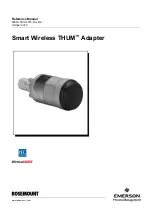
8. Select
‘OK’
at the files needed window.
Figure 10
9. The same process as above in steps 1-9 will have to be repeated for the next file
‘qserprt.inf’.
In step 7 be sure to shoose
‘qserprt.inf’
and select open.
4.2
SSP-100 Resource Settings in Windows 2000
Windows 2000 maintains a registry of all known hardware installed within the computer. Inside
this hardware registry Windows 2000 keeps track of all the computer's resources, such as base
I/O addresses, IRQ levels, and DMA channels. In the case of a
PC Card (PCMCIA)
type board,
Windows 2000 configures the new hardware using free resources it finds within the hardware
registry, and updates the registry automatically.
To view and/or edit hardware devices in Windows 2000 use the system
Device Manager
.
To access Device Manager double click the
System
icon in the Windows 2000 control panel, or click the
My
Computer
icon on the Windows 2000 desktop with the right mouse button and select
Properties
from the pull
down menu. Click on the
Hardware
tab then click on the
Device Manager
. Consult Windows 2000 on-line help
for details on the use of the
Device Manager
Windows 2000 handles the SSP-100 as a "parent/child device".
v
The SSP-100 is the "parent device" and is listed under the hardware class
Quatech
SSP-100 PCMCIA RS-232 Serial Adapter
in the device manager.
v
The serial port is a "child device" of the "parent device" SSP-100 (Quatech PCMCIA
Serial Port). There is 1 child COM port for the SSP-100 (Quatech PCMCIA Serial Port)
which is listed under the hardware class
Ports (Com & LPT).
4-4
SSP-100
(Rev. G and later)
User's Manual
Summary of Contents for SSP-100
Page 6: ...This page intentionally left blank SSP 100 Rev G and later User s Manual 2 1 ...
Page 27: ...Windows 2000 4 7 ...
Page 33: ...3 Follow the steps for the Add Quatech Hardware Wizard Windows NT 5 3 ...
Page 36: ...This page intentionally left blank 7 1 SSP 100 Rev G and later User s Manual ...
Page 38: ...SSP 100 User s Manual Revision 3 12 March 2004 P N 940 0074 312 Quatech Inc ...















































